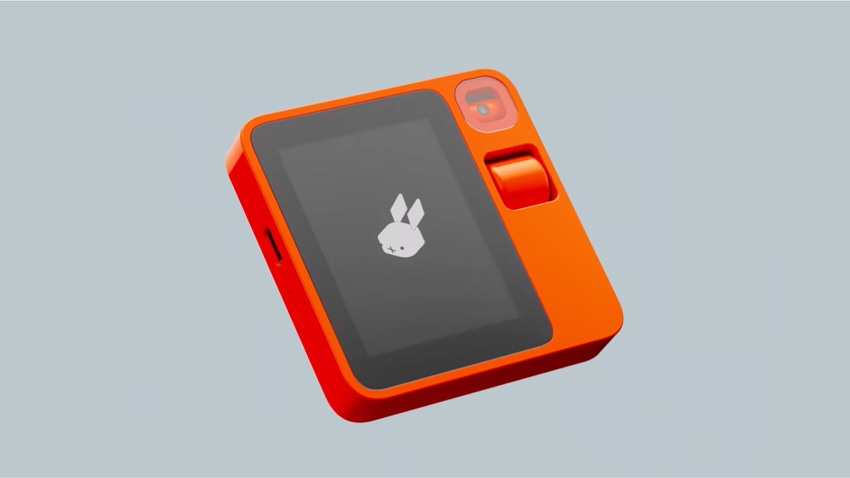Rabbit R1, a Novel AI Agent Device, Is Selling Out
Microsoft CEO Satya Nadella says r1 is one of the most "impressive" devices he has seen since the iPhone's launch

At a Glance
- The next generation of AI assistants is the AI agent that not only understands what you want to do but does it for you.
- The recently unveiled rabbit R1 is a standalone device that does just that - without tapping into APIs.
Welcome to the new world of AI agents: assistants that not only understand what you want to do but execute it for you.
A recent AI agent entrant that has been the talk of the AI community is rabbit’s R1 device. It is a standalone, $199 device that connects to your mobile apps and executes tasks for you − using a proprietary new language model and without tapping into any APIs.
The r1 takes instructions in natural language. For example, ask it to call an Uber for a family of four and it will do so. The user confirms the transaction. The device is also teachable: in a demo, it learned how to generate images after the user tapped into Midjourney to show it how.
As of Jan. 18, the fifth batch of 10,000 r1 devices has sold out, according to a company tweet. Pre-orders for the sixth batch of 50,000 devices is open at rabbit.tech, with delivery dates in June and July.
One fan is Microsoft CEO Satya Nadella. "I thought the demo of the rabbit OS and the device was fantastic,” he told Bloomberg. “After (Steve) Job’s launch of iPhone, (it was) probably one of the most impressive presentations I have seen of capturing the vision of what is possible going forward for what is an agent-centric operating system and interface.”
Michael Nizich, a professor of computer science at New York Institute of Technology, said in an interview that “it appears that the very unique difference in the rabbit r1 device is that it is learning how you, as an individual, use your apps to make your life easier, more productive, and usually just more enjoyable.”
“Since these are extremely subjective values and, as you can imagine, very unique to each individual and each smartphone user, the rabbit device has a chance to learn how each user uses their phone for each of life's chores. The device will then be able to very accurately replicate what you would do, how you would do it, and possibly even when you would do it.”
Large Action Model
The r1 device is powered by rabbit OS, an operating system developed atop the Large Action Model (LAM). This foundation model, exclusive to rabbit, is adept at inferring and modeling human interactions with computer interfaces.
Users can utilize the "rabbit hole," a cloud-based platform, to integrate their existing apps with their r1 device, allowing them to activate various features and functions. This process is akin to giving an unlocked phone to a friend to order takeout on your behalf. With user consent, rabbit OS carries out tasks without storing any personal identity data or passwords.
Gadgets such as the r1 work because an individual's digital routines typically show little variation, making them manageable by an advanced AI system, Nizich said. If an AI system sees that lots of people go to the gym before work, for example, it can guess you might, too. Then, it can help make your gym visits better and more efficient.
“As an example, even today, your phone displays your Lidl (grocer) app in your phone's shortcuts because you are physically at Lidl,” he added. “Now, in an action-oriented AI world, not only would the Lidl app load and position itself at the QR code upon reaching the cashier, but your entire shopping experience would have been interactive, telling you what regular groceries you are in need of and even what groceries you need for the weekend super bowl party for 20 that you are throwing at your house.”
The future of AI devices?
The r1 is one of several devices either recently launched, soon to be launched, or in development that aims to bridge the gap between LLM-powered chatbots and action-oriented AI agents.
AI agents like those used in the r1 are the next step after simple question-and-answer systems, Simon James, managing director of Data & AI at the consulting firm Publicis Sapient, said in an interview.
“The AI not only calls an answer it has previously been trained upon, but it uses planning and analytical skills to solve problems with explicitly being given the correct strategy,” he added. “This can lead to novel new solutions to old problems and can clearly disrupt today's business models.”
“A more advanced AI assistant that combines this deep understanding with the ability to interact with a myriad of online applications and interfaces would represent a significant breakthrough,” James said.
“One can imagine more complex tasks being achieved than ever before, more sophisticated problem solving, greater personalization, more enhanced conversational experiences, and essentially combining AI-capabilities to just about everything we do on a day-to-day basis if the challenge between the current state of digital assistants and the incorporation of Generative AI can be met.”
Read more about:
ChatGPT / Generative AIAbout the Author(s)
You May Also Like




.jpg?width=700&auto=webp&quality=80&disable=upscale)
.jpg?width=700&auto=webp&quality=80&disable=upscale)
.jpg?width=700&auto=webp&quality=80&disable=upscale)
.jpg?width=300&auto=webp&quality=80&disable=upscale)
.jpg?width=300&auto=webp&quality=80&disable=upscale)
.jpg?width=300&auto=webp&quality=80&disable=upscale)
.jpg?width=300&auto=webp&quality=80&disable=upscale)
.jpg?width=300&auto=webp&quality=80&disable=upscale)